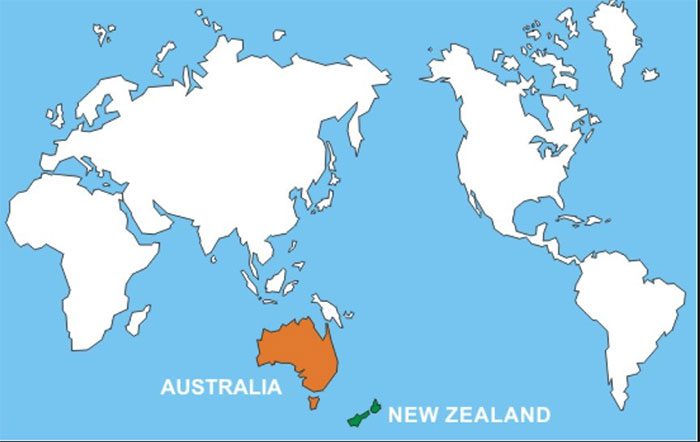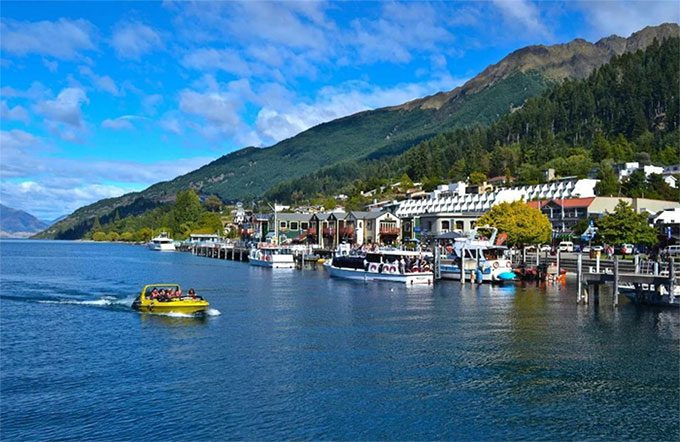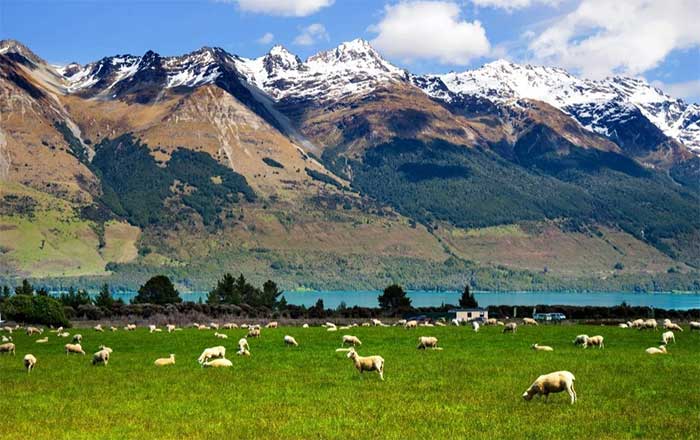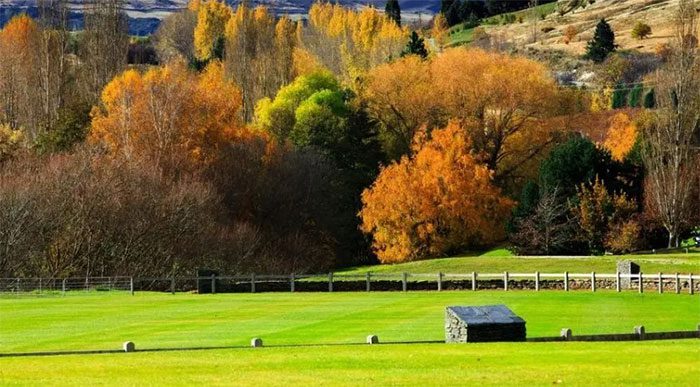Deep in the South Pacific, there is an island nation with no neighboring countries within a radius of 1,600 km. At a glance, surrounded by vast oceans within a 2,000 km radius, this country can be said to be very lonely.
This is New Zealand, a “lonely” and beautiful island nation.
New Zealand is an island country in Oceania, located in the southwestern Pacific Ocean. This nation is situated in a very remote position, with the endless Pacific Ocean to the east, Antarctica (3,000 km) to the south, and still over 10,000 km away from the South American continent.

Geographical location of New Zealand.
Even Australia, the country closest to New Zealand, has a straight-line distance of more than 2,200 km, while the nearest island nations are over 2,000 km away.
Looking around, New Zealand has no neighbors to “chat” with, drifting alone across the ocean.
Although New Zealand is an island nation, it has a land area of 270,000 km2 and a population of approximately 5.1 million people. This can be considered a typical sparsely populated region.
New Zealand has a temperate climate year-round, with no scorching summers or freezing winters, making it highly suitable for development, to the extent that more than half of New Zealand is covered with natural grasslands and farms, with a forest cover rate of up to 30%.

New Zealand has a temperate climate year-round.
In New Zealand, you can see a variety of natural landscapes such as volcanoes, hot springs, pristine forest lakes, and snow-capped mountains. Many places in the parks still retain their original natural features, resembling a country before the Industrial Revolution. Therefore, New Zealand is also dubbed “The Garden of God’s Backyard.”
This is a lonely island nation, yet its dairy production ranks first in the world. Each year, nearly a quarter of the world’s dairy products come from New Zealand. In the 1980s, New Zealand’s livestock industry entered its golden era. The country has up to 70 million sheep, averaging several dozen sheep per person.
Due to New Zealand’s small population, the population density is only 18.2 people per square kilometer. Locally, there are fewer people than the number of wild animals in the country, with humans comprising only 5%, while the rest are animals.


Each year, nearly a quarter of the world’s dairy products come from New Zealand.
Among over 5 million people, nearly half of the population is concentrated in major cities like Auckland and Wellington. However, even the largest city in the country, Auckland, has a population of only about 1 million people.
Due to the vast land, sparse population, and high average income, the New Zealand government encourages people aged 16 and older to marry and does not restrict the number of children.
To ensure these children develop strongly, New Zealand’s child protection laws are very comprehensive. Until they reach adulthood, children will be protected by the state. Parents who abuse their children will face imprisonment. Additionally, education in New Zealand is free, and educational resources are relatively balanced. Regardless of each family’s income, the level of education that children receive is fundamentally the same.


















































